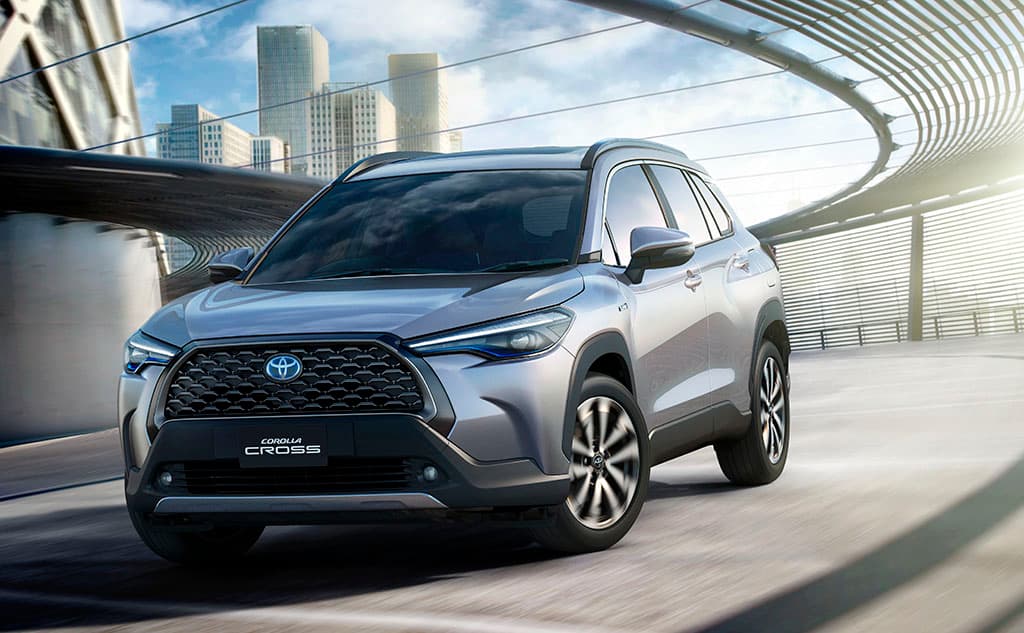Car nameplates getting put into a crossover was bound to happen. The Mitsubishi Eclipse Cross and Ford Mustang Mach-E are just the beginning as more automakers turn cars into high-riding models. Toyota started doing that in other global markets with the Yaris Cross and Corolla Cross. Of the two, it wouldn’t be a surprise if the latter comes to the U.S.
Since the U.S. is the most crossover/SUV-crazed market, the Toyota Corolla Cross is a logical fit here. That allows Toyota to capitalize on the popularity of the Corolla nameplate and the demand for SUVs and crossovers. The Corolla Cross’ size puts it between the C-HR and RAV4, meaning it’s going to be on the more affordable end of the spectrum, expanding its reach to more consumers.
When the Corolla Cross arrives, you may be asking what will be powering this rig? Simple. It’s already in the Corolla sedan and hatchback. Toyota’s new 2.0-liter I4 should be the base engine. In the Corolla, it makes 168- to 169 hp and 151 lb-ft of torque routed through either a six-speed manual or a CVT. That engine is also the basis of a hybrid system that could be the higher output option for the Corolla Cross. In the Lexus UX 250h, that makes 181 hp combined. Like the UX, the Corolla Cross could also offer AWD but only on the hybrid model. Instead of a mechanical AWD system, Toyota hybrids add a second electric motor in the rear axle.
Underpinning the Toyota Corolla Cross is the TNGA-C platform. That architecture first debuted on the current-generation Prius and is also used on the Corolla, C-HR, and Lexus UX. Most of the parts found in the Corolla Cross are already found in vehicles sold in the U.S. so homologating it would likely cost Toyota little money.
The arrival of the Corolla Cross in the U.S. adds another entry to the list of automakers offering two distinctly flavored subcompact crossovers. This means that Toyota will position the Corolla Cross as the more practical model aimed at the likes of the Subaru Crosstrek and Jeep Compass. On the other side of the spectrum will be the C-HR, which is expected to get a new generation within the next year or two. That model should get sportier to go head-to-head with the likes of the Hyundai Kona and Mazda CX-30. Expect the same powertrain options from the Lexus UX to eventually find their way into the C-HR with the hybrid being the only way to get AWD.
Adding a crossover-ified Corolla is more than just a sales move for Toyota. It’s a way for the automaker to ensure the survival of a long-running nameplate in a market where traditional sedans and hatchbacks are playing second fiddle to utility vehicles. The Corolla sedan and hatchback should survive as smaller players while the SUV makes up the bulk of the sales volume. Additionally, this is a way for Toyota to make electrified powertrains more attainable. The Corolla Hybrid sedan has already started that and the Corolla Cross appears to be the next part of that strategy as Toyota aims to offer a hybrid, plug-in, fuel cell, or all-electric variant on all of its models by 2025.

